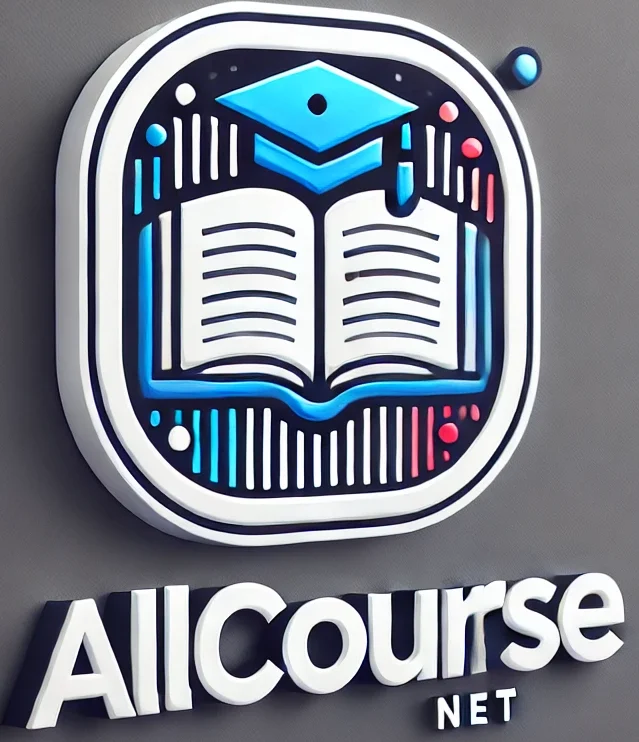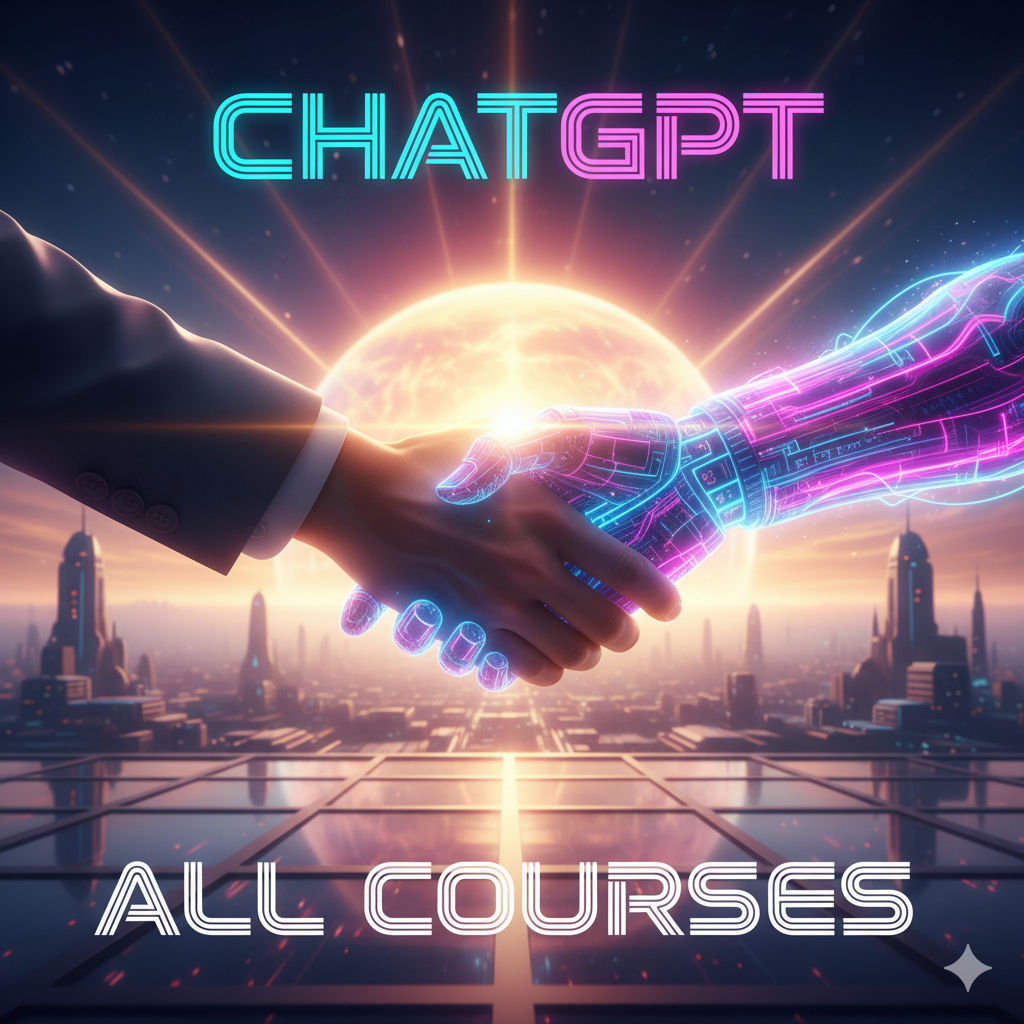ChatGPT 3 to 5: Everything You Need to Know About This AI Tool for Success
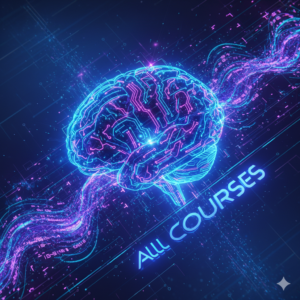
Introduction: Why ChatGPT Has Become the World’s Favorite AI Companion
Not too long ago, the idea of having a conversation with a machine that writes, reasons, and explains like a human sounded like science fiction. Yet here we are—in the 2020s—where ChatGPT has gone from a geeky AI experiment to a tool that millions of students, professionals, and creators rely on daily.
Launched by OpenAI, ChatGPT has become more than just an “AI chatbot.” For some, it’s a productivity coach. For others, it’s a personal tutor, coding partner, or even a creative collaborator. The buzz isn’t hype—when used properly, it genuinely boosts speed, creativity, clarity, and problem-solving across industries.
But here’s the catch: while everyone talks about ChatGPT, very few actually understand how it works, how it has evolved, and how to get the most out of it. That’s where this guide comes in.
In this long-form post, you’ll learn:
- How GPT evolved from version 3 to 5 (and what’s different in each)
- The science made simple behind how it thinks and generates responses
- The most powerful use cases and success stories
- The art of prompt engineering (how to ask smarter questions)
- Tips and tricks to make ChatGPT your everyday advantage
- What to expect from the future of AI assistants
By the end, you’ll not only know “what ChatGPT is,” but you’ll also understand how to make it work for you in real, practical ways.
Let’s start where it all began—with GPT-3, the model that set the world on fire.
The Evolution of ChatGPT – From GPT-3 to GPT-5
Before diving into the nuts and bolts of how ChatGPT works, it’s important to trace its journey. The AI you use today in GPT-5 form is not the same as what early adopters used in 2020. Each version has been a milestone, pushing boundaries of what machines can do with human language.
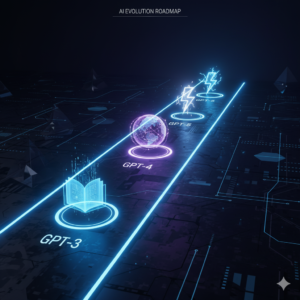
What is GPT, anyway?
GPT stands for “Generative Pretrained Transformer.”
-
Generative → it creates new content (text, code, ideas).
-
Pretrained → it has already learned from massive amounts of data before you ever type a word.
-
Transformer → this is the architecture that makes it excel at understanding context in language.
Think of GPT as a really advanced prediction engine. Given a sentence, it predicts the most likely next word, but it does this at such a scale and with such sophistication that the results feel shockingly human.
GPT-3 (2020): The Breakthrough Moment
When GPT-3 was released, it was the first model big enough (175 billion parameters) to truly impress the public. Suddenly, AI wasn’t just giving robotic replies—it was writing poetry, explaining physics, and drafting emails that felt natural.
Highlights of GPT-3:
-
175 billion parameters (the “neurons” of the AI).
-
Huge leap in fluency compared to GPT-2.
-
Early use in content writing, coding, and chatbots.
-
Limitations: sometimes inaccurate (“hallucinations”), struggled with logic, and often verbose.
Despite flaws, GPT-3 sparked the AI revolution we now see everywhere.
GPT-3.5 (2022): The Fine-Tuner
GPT-3.5 wasn’t as revolutionary as GPT-3, but it made the tool more practical for everyday use.
-
Better fine-tuning → responses became more accurate.
-
More reliable conversational memory.
-
Powering the first free version of ChatGPT that went viral in late 2022.
-
Used widely in education and small businesses.
GPT-3.5 was the first time many people said, “Wow, I can actually use this in my work.”
GPT-4 (2023): The Game-Changer
GPT-4 was where ChatGPT became multimodal and much smarter.
-
Could process text + images (you could upload a diagram and ask for explanations).
-
Better at reasoning, analysis, and coding.
-
Could follow complex multi-step instructions.
-
More nuanced writing styles (creative, technical, casual).
GPT-4 became the go-to AI for professionals, powering industries from law to marketing.
GPT-5 (2024/2025): The Latest Leap
And now we arrive at GPT-5—the version many call a true AI assistant rather than just a chatbot.
-
More natural, human-like conversations.
-
Stronger reasoning and problem-solving.
-
Improved ability to remember context across longer sessions.
-
More reliable factual grounding (less hallucination).
-
Advanced personalization (adapts to your style and needs).
-
Expanded multimodality (text, images, audio—and video coming soon).
GPT-5 is designed not just to answer but to collaborate, making it the closest thing yet to a digital co-worker.
How ChatGPT Actually Works
Alright, let’s be real—most of us don’t care about the deep math or rocket-science-level coding behind ChatGPT. What we do care about is: How does this thing manage to sound so human? And how can I understand it enough to use it better?
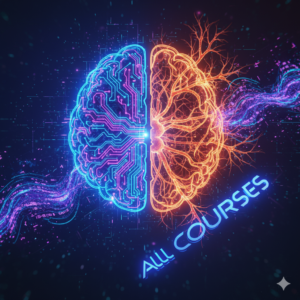
Here’s the simplest way to think about it:
ChatGPT is basically the world’s most advanced guessing machine.
Think Autocomplete… but on Steroids
You know when you type “Happy birth…” into your phone and it guesses “day”? That’s autocomplete. ChatGPT works the same way—but instead of just guessing one word, it can guess entire paragraphs, stories, or even computer programs.
The difference is scale. Your phone might have a small dictionary of patterns. ChatGPT? It has read the equivalent of millions of books, articles, blogs, research papers, and code samples. So when you ask it something, it’s drawing from a gigantic ocean of language patterns.
That’s why when you say: “Explain black holes like I’m 10 years old”—it doesn’t just spit out a Wikipedia definition. It has seen enough patterns of “kid-friendly explanations” to give you an answer that actually feels simple, clear, and human.
How It Learned (in Plain English)
Imagine you had a friend who read every library in the world and took notes on how sentences flow, how questions are answered, how jokes are told, and how essays are structured.
That’s ChatGPT.
-
First, it went through pretraining → basically reading a ridiculous amount of text.
-
Then, it got fine-tuned by humans → people literally asked it questions and corrected its mistakes.
-
Finally, it went through something called RLHF (Reinforcement Learning with Human Feedback) → which is just a fancy way of saying: humans rewarded good answers and flagged bad ones, shaping it to be more helpful and polite.
The result? A machine that doesn’t “understand” like humans, but is so good at predicting language patterns that it feels like it understands.
Why It Feels So Human
Two big reasons:
Memory of context → Unlike old-school bots that forgot what you said two seconds ago, ChatGPT keeps track of the conversation (to a certain limit). That’s why it can say, “As we discussed earlier…” and sound like it’s paying attention.
Probability magic → Every time you ask something, it runs through thousands of possible answers, ranks them, and gives you the one that makes the most sense. Multiply that across every single word, and you get responses that flow like natural conversation.
Its Strengths
-
Writes fluently in almost any style.
-
Can adapt to your tone (serious, funny, casual, technical).
-
Generates ideas fast—brainstorming, outlines, drafts.
-
Works across fields—coding, business, school, creativity.
Its Weaknesses
-
Makes stuff up. Sometimes confidently wrong (we call this “hallucinating”).
-
Doesn’t truly “know.” It predicts, it doesn’t believe.
-
Can be biased. Since it learns from the internet, it inherits human flaws.
-
Memory limits. Earlier versions forgot long chats; GPT-5 is better but not perfect.
💡 Think of ChatGPT like the smartest intern you’ll ever hire.
It’s fast, creative, and surprisingly knowledgeable. But it still needs supervision—you’re the boss who checks facts, edits, and makes the final call.
How People Actually Use ChatGPT
Okay, theory aside—what do people really use this thing for?
Here’s the fun part: almost everyone uses ChatGPT differently. For some, it’s a study buddy. For others, it’s a co-worker. For a few, it’s like a therapist who never gets tired of listening.

Let’s look at some real-world ways people are winning with it:
Learning & Education
-
Struggling with math homework? GPT can break it down step by step.
-
Learning French? You can literally have a conversation with it.
-
Preparing for exams? Ask for summaries, key points, and practice questions.
It’s like having a 24/7 tutor who never gets annoyed by your “Wait, can you explain that again?”
Content Creation
Writers, bloggers, YouTubers, and marketers swear by it:
-
Generate blog post ideas and outlines.
-
Draft scripts, captions, or ads.
-
Rewrite boring text into something fun and engaging.
-
Repurpose one piece of content into multiple formats (blog → social posts → email).
Basically, it’s the cure for writer’s block.
Work & Business Productivity
This is where it shines for professionals:
-
Drafts emails in seconds.
-
Summarizes 50-page reports into a 1-page brief.
-
Creates proposals, presentations, and FAQs.
-
Helps brainstorm business strategies.
If you’ve ever thought, “I wish someone could just do the boring admin stuff for me,”—that’s GPT.
Coding Help
For developers, it’s like a friendly coding buddy:
-
Explains code in plain English.
-
Helps debug errors.
-
Generates snippets of code.
-
Teaches new programming concepts.
It doesn’t replace learning to code—but it speeds up the process dramatically.
Brainstorming & Research
Stuck on ideas? ChatGPT is a creative powerhouse:
-
Startup names, product features, marketing angles.
-
Research summaries on complex topics.
-
Pros and cons lists to help make decisions.
It won’t give you perfect market research, but it’s amazing for getting the ball rolling.
Customer Support
Companies use GPT as their first line of customer support:
-
Answering FAQs instantly.
-
Guiding users through troubleshooting.
-
Routing to the right department.
It cuts wait times for customers and frees up human agents for tougher problems.
Personal Growth
This one surprises a lot of people. Individuals use GPT for:
-
Journaling prompts.
-
Daily planning and productivity hacks.
-
Practicing speeches or tough conversations.
-
Even emotional check-ins (though it’s no replacement for therapy).
In short: it’s not just for work—it’s a tool for life.
And here’s the big picture: ChatGPT isn’t just a chatbot. It’s a Swiss Army knife for the digital age. Whether you’re a student, freelancer, manager, or just curious about the world, there’s a way to make it work for you.
Key Functions of ChatGPT
As, an intelligent digital assistant, these are some practical uses of ChatGPT:
Example of a picture editing;
This is an edited picture made using ChatGPT.



Editing and Writing
- Blog posts like a blogger, essays like and essayist, research summaries just like a researcher
- Email drafts and Social media captions like a social media influencer
- Grammar correction and content rewriting, guide like an expert teacher
Learning and Tutoring
- Get step-by-step help in subjects like computer, science, math, history and language learning
- Summarize complex topics in simple language for easy and better understanding
- Prepare for exams by practicing like a co-trainer (SATs, IELTS, Commission tests)
Programming Help for computer
- Debugging code of computer (JavaScript, Python, HTML, etc.)
- Algorithms, Writing functions, and even full apps
- Learning programming from scratch to an expert level
Brainstorming and Content Ideation
- Blog topic ideas for google websites
- slogans, Product names, or YouTube titles
- Ghost writing, Creative writing: stories, poems, scripts
Language and Translation
- Translate text between multiple languages to any language like French student can translate into French for better understanding
- Explain grammar rules, you Can practice different grammar mistakes or confusions on it, It will work like a grammarian
- Create examples for language learners like, to understand Ratio it will provide different examples and practice exercises for student understanding and also check the solution for further guidance
Conversation and Role-Playing
- You can practice job interviews, how to speak and sit, and it will give tips to improve skills
- Run role-plays for therapy, teaching, or customer service
- Casual chats for learning and different suggestions
How to Use ChatGPT Effectively
Think of ChatGPT as an assistant, like having a conversation with an always-available and super smart assistant. The main points on how to use GPT,
✅ Be Clear and Specific
Guide and give commands by using clear and specific words
- Instead of:
- “Write me a short poem.”
✅ Clear and more specific;
“Write a concise, funny 4-line poem about tea and coffee.
2. “Tell me something about the war of 1945.”
Use this as an alternative to
“Can you explain in 5 bullet points about World war-2 for an eighth-grade student?”
✅ Use Prompts Like a Pro
learn more about prompt engineering ;
Great prompts = better answers. Prompts are the commands you give instructions for answer, Try:
- “Summarize the article in different headings along with bullets in 1000 words
- “Act as a friendly English teacher, correct this sentence, and give me more practice questions.”
✅ Explore the Modes

-
Image input: It can interpret information from an image, and you can ask any question about the image; it will answer you, ask for diagrams, and different UI designs
-
Code interpreter: For designing charts, chart making, or working with files
Text: Best for evaluating questions for best answers
Prompt Engineering – Talking to ChatGPT the Smart Way
Here’s the funny thing about ChatGPT: it’s not just about using it, it’s about how you talk to it.
If you’ve ever asked it something and thought, “Meh, that’s not what I wanted,” the problem usually isn’t the AI—it’s the way the question (the “prompt”) was phrased.
Think of it like ordering food at a restaurant. If you just say, “Bring me food,” you might get a random salad you don’t like. But if you say, “I’d love a grilled chicken sandwich, extra cheese, no onions, with fries on the side,”—boom, you get exactly what you wanted.
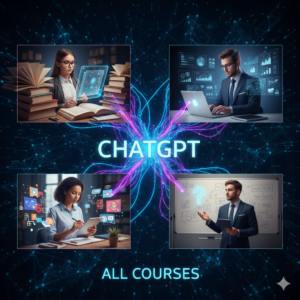
That’s prompt engineering. It’s not technical or scary—it’s simply learning how to ask better questions.
So, what’s a prompt?
A prompt is just what you type into ChatGPT—the instructions, the question, the request. But here’s the secret: the quality of your prompt directly affects the quality of the answer.
Example:
-
Bad prompt: “Tell me about fitness.”
-
Good prompt: “Write me a 200-word blog post in a friendly, motivational tone about how busy parents can stay fit at home.”
See how the second one gives ChatGPT a clear role, tone, and purpose? That’s when the answers start to feel tailored—like it was written just for you.
Golden Guidelines for Better Prompts
Let me give you some super simple rules that make a massive difference:
Be clear and specific.
Vague in = vague out. If you want something detailed, tell it exactly what you expect.
-
-
Meh: “Write me a story.”
-
Better: “Write me a short bedtime story about a brave cat who saves its village, in a funny but heartwarming style.”
-
Give it a role.
ChatGPT loves to play roles—it’s like improv acting. Tell it who it is, and it will step into character.
-
-
“You are a travel guide. Plan me a 3-day trip to Rome with food recommendations.”
-
“You are a resume expert. Rewrite my CV to sound more professional.”
-
Break big tasks into steps.
Don’t overwhelm it with a huge request. Think of it like baking a cake—you ask one step at a time.
-
-
Step 1: “Give me an outline for a podcast episode about climate change.”
-
Step 2: “Write the intro script for the podcast based on the outline.”
-
Step 3: “Expand section 2 into a conversational dialogue between two hosts.”
-
Suddenly, you’re not just asking for “a podcast,” you’re building one together.
Tell it the style or format you want.
ChatGPT can switch styles like a chameleon. Want bullet points? A casual tone? A Shakespearean poem? Just say so.
-
-
“Summarize this book in 5 bullet points.”
-
“Explain gravity like I’m a 10-year-old.”
-
“Write a professional email declining a meeting, in under 100 words.”
-
Refine, don’t settle.
The first draft is just the beginning. You can always say:
-
-
“Make it shorter.”
-
“Add humor.”
-
“Rewrite it in simpler words.”
-
ChatGPT is like clay—you keep shaping until it’s what you want.
Power Prompting in Action
Here are some tricks (and copy-paste examples) that people use every day:
-
Role prompting:
“You are a nutritionist. Create a 7-day meal plan for someone who wants high protein but low carbs.” -
Step-by-step prompting:
“Explain this math problem step by step, not just the answer.” -
Style prompting:
“Write a motivational LinkedIn post in 150 words, using an inspiring but conversational tone.” -
Creative prompting:
“Imagine you’re Shakespeare writing a breakup text. What would it sound like?”
Mistakes Most People Make
-
❌ Being too vague → “Tell me about marketing.”
-
❌ Asking for the impossible → “What’s going to happen in 2030?”
-
❌ Forgetting to check facts → GPT sounds confident, but it can make mistakes.
-
❌ Treating it like Google → It’s not a search engine. It’s a conversation partner.
Quick Hack (The Magic Formula):
Here’s a shortcut for great prompts:
[Role] + [Task] + [Context] + [Format] + [Tone]
Example: “You are a financial advisor. Write a 300-word blog (task + format) for college students (context) about budgeting, in a fun and encouraging tone (tone).”
That’s how you turn ChatGPT from “meh” to mind-blowing.
Okay—now that you’ve got the “secret sauce” of prompting, let’s go even deeper in Section 6: Tips to Get the Best Out of ChatGPT.
This is where I’ll share practical hacks and habits that transform ChatGPT from just a cool AI toy into your everyday success partner. Think of it like insider secrets from power users.
Tips to Get the Best Out of ChatGPT – Making It Your Everyday Sidekick
Here’s the truth: anyone can use ChatGPT. You type, it replies. Done.
But the people who really benefit? They don’t treat it like a cold machine. They treat it like a partner, a brainstorming buddy, a second pair of eyes. Think of ChatGPT as your always-available teammate—the one who never complains, never gets tired, and always has something to say.
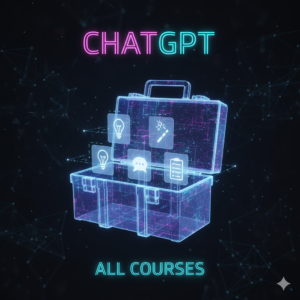
Let’s dive into some super real, everyday ways to get the best out of this tool.
Stop Thinking “Search Engine” – Start Thinking “Conversation”
If you talk to ChatGPT like Google, you’ll get Google-ish answers. Short, generic, “meh.”
But when you talk to it like a person—give context, explain your goal, ask follow-ups—it’s a whole different experience.
👉 Example:
-
Google-style: “Best diet.”
-
ChatGPT-style: “I’m a 30-year-old beginner, want to eat healthier, but I hate cooking. Can you make me a simple weekly meal plan?”
See the difference? One is “search.” The other is conversation.
The First Draft Is Just the Start
ChatGPT’s first reply? Think of it as a rough sketch. Like doodling on a napkin. The magic happens when you shape it.
Try saying things like:
-
“Make it sound more fun.”
-
“Cut it in half.”
-
“Add an example from everyday life.”
It’s like sculpting clay—you keep tweaking until it feels right for you.
Use It to Untangle Your Brain
Ever had too many ideas swirling around your head? Or a to-do list so long you don’t know where to start?
ChatGPT is amazing for this. Just dump your messy notes in and say:
-
“Summarize this in 3 key points.”
-
“Turn these random ideas into a clear plan.”
-
“Organize this draft into bullet points.”
It’s like mental decluttering—but instant.
Learn Stuff Faster (Without Feeling Dumb)
Here’s a hack: whenever something feels too complicated, just ask ChatGPT to “explain it like I’m 10.”
Suddenly blockchain, economics, or grammar rules don’t feel scary anymore.
Even better—you can go step by step:
-
“Summarize this in simple terms.”
-
“Now quiz me like a teacher would.”
-
“Pretend I’m wrong and explain why.”
Boom. You’ve got your own personal tutor, no judgment attached.
Hand Off the Boring Stuff
Let’s be real—nobody loves writing stiff emails, summarizing long reports, or making meeting notes.
That’s where ChatGPT shines:
-
Draft your email, then you just tweak.
-
Summarize that 20-page PDF into something you can actually read.
-
Rewrite dry text so it sounds human.
Whenever you catch yourself sighing, “Ugh, do I really have to write this?” → pass it to ChatGPT first.
Shake Off Creative Blocks
Blank page? Brain freeze? No problem. ChatGPT is like a creativity spark plug.
👉 Examples:
-
Need blog titles? Ask for 10 options.
-
Stuck on a caption? Get 5 playful versions.
-
Writing a story? Ask it to suggest the next plot twist.
Even if you don’t use its exact idea, it kickstarts your creativity.
Practice Without Pressure
Here’s something few people do but should: role-play with ChatGPT.
-
Job interview? “Pretend you’re the manager. Ask me tough questions, then rate my answers.”
-
Public speaking? “Act like my audience and give me feedback on my opening line.”
-
Even small talk practice—it works!
It’s like having a practice buddy who never judges.
Save Your Best Prompts
Pro tip: if you find a prompt that works really well, don’t lose it. Keep a little “prompt library” in Notes or Google Docs.
Next time, instead of reinventing the wheel, you just copy-paste and tweak. Future-you will thank you.
Don’t Blindly Trust Everything
Okay, reality check: ChatGPT is smart, but it’s not perfect. Sometimes it sounds confident while being totally wrong. (We call this “hallucination.”)
So here’s the rule:
-
Use it to brainstorm, write drafts, learn, or organize.
-
Double-check anything factual (like stats, medical, legal, or financial info).
Think of it like that super helpful friend who knows a lot—but you still Google things to be sure.
Make It Part of Your Routine (Bit by Bit)
Don’t pressure yourself to use it for everything right away. Start small.
-
Maybe you use it once a day to draft an email.
-
Or ask it to plan your meals for the week.
-
Or let it edit one blog post for you.
Over time, you’ll naturally start using it more—because it saves time, reduces stress, and sparks ideas.
Before you know it, it won’t feel like “using AI.” It’ll just feel like having a super-efficient, slightly nerdy sidekick by your side.
ChatGPT isn’t just for “techies” or “students.” It’s for anyone who writes, learns, plans, or creates. The trick is not to see it as a robot, but as a flexible, collaborative tool that adapts to you.
The Future of GPT and AI – What’s Around the Corner 🚀
Okay, so we’ve talked about where ChatGPT came from and how you can make it work for you right now. But let’s be honest—most of us can’t help but wonder: where’s this all going?
Because if the leap from GPT-3 to GPT-5 already feels huge, imagine what things will look like in a few years. Spoiler: it’s going to be wild, exciting, and yes, a little challenging too.

Here’s what the road ahead might look like—without the jargon, just the real impact it could have on your everyday life.
Conversations That Feel Like… Conversations
Right now, ChatGPT is pretty good at chatting. But sometimes it still feels, well, a little “robot-y.”
Future versions? They’ll be smoother, quicker, and way more natural. You’ll be able to joke with it, vent to it, or brainstorm at 2 a.m. and feel like you’re talking to someone who gets it. Not just replying, but understanding.
More Than One AI Buddy
At the moment, GPT is a “jack of all trades.” Need recipes? Homework help? A business plan? It tries to cover it all.
But imagine having a whole AI team instead:
-
A “fitness coach” AI that knows your workout style.
-
A “finance buddy” AI that helps with money goals.
-
A “study partner” AI that explains things the exact way you learn best.
Instead of one assistant, you’ll have a small squad, each tuned to a different part of your life.
An AI That Actually Knows You
This one’s big. Right now, ChatGPT doesn’t remember much unless you remind it. But future versions? They’ll remember your preferences, your goals, and even your style.
Picture this:
-
You open GPT and it already knows you’re working on your thesis, so it suggests research.
-
Or it remembers you love casual, upbeat writing, so it skips the boring formal tone.
-
Or it checks in: “Hey, last week you said you wanted to eat healthier. Want me to make a new meal plan?”
It won’t just be “an AI.” It’ll feel like your AI.
Creativity Like Never Before
AI is already dabbling in art, music, and design—but the next wave? It’ll be like having a full creative studio at your fingertips.
-
You’ll say, “Make me a podcast intro with upbeat music,” and it’ll whip one up.
-
Or “Design me a logo that feels playful but minimal,” and it’ll give you options in seconds.
-
Or “Turn my story idea into a short animated video.” Done.
Instead of replacing creativity, it’ll act like rocket fuel for your imagination.
AI Everywhere, Not Just in a Browser
Here’s the thing: GPT won’t just live in a chat box. It’ll quietly slip into everything you already use.
-
Your email will start drafting smart replies.
-
Your calendar will reorganize itself around your habits.
-
Your phone might whisper real-time translations during a call.
-
Glasses or earbuds could give instant explanations of whatever you’re looking at or listening to.
It’ll feel less like “opening an app” and more like AI is just part of the air you breathe.
The Big Questions We’ll Have to Face
Of course, all this comes with some serious questions.
-
If AI gets things wrong, who’s responsible?
-
If it remembers our personal info, how do we protect privacy?
-
If it can do parts of our jobs, what happens to work?
These aren’t small questions, and we’ll all have to play a part in answering them—tech companies, governments, and yes, regular people like us.
Jobs Won’t Vanish, They’ll Shift
One of the biggest fears is: “Will AI take my job?”
Here’s the thing: AI isn’t about replacing people, it’s about changing the way we work.
-
Writers will edit and direct AI drafts instead of starting from scratch.
-
Teachers will spend less time grading and more time mentoring.
-
Small business owners will handle marketing, planning, and customer care way faster with AI by their side.
The winners? The ones who learn how to use AI as a partner.
AI as Your “Life Multiplier”
This, honestly, is the most exciting part.
AI isn’t just a convenience tool—it’s a multiplier. It makes one person capable of what used to take a whole team.
-
Students can learn at lightning speed with personal tutoring.
-
Creators can pump out projects with professional polish.
-
Entrepreneurs can run businesses without needing 10 employees.
It’s less about robots “taking over” and more about humans leveling up.
The future of GPT isn’t about losing control to machines—it’s about gaining leverage. It’s about having a supercharged sidekick that helps you work, learn, create, and live better.
The people who thrive won’t be the ones who ignore it. They’ll be the ones who lean in, experiment, and figure out how to make AI their ally.
Your Turn to Step Into the Future 🌟
So, we’ve taken quite a journey together. We started with the early days of GPT-3, saw how things grew with GPT-4, and landed here in the present with GPT-5. Along the way, we explored prompt engineering, productivity hacks, creative uses, and even peeked into the future of AI.
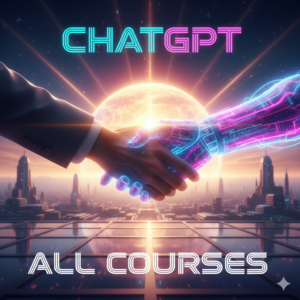
But here’s the thing: none of this matters if it just stays as interesting information in your head. The real magic happens when you actually start using GPT in your daily life.
Why This Matters to You Right Now
AI isn’t some faraway futuristic thing—it’s already here. Every single day, people are using GPT to:
-
brainstorm business ideas,
-
write cover letters that actually get noticed,
-
draft essays in half the time,
-
come up with healthier meal plans,
-
or even just have someone to bounce random 2 a.m. thoughts off of.
And you don’t need to be a “tech person” to use it. All you need is curiosity and a willingness to experiment.
Start Small, Grow Big
Here’s my advice: don’t overcomplicate it.
-
Try asking GPT to help with one simple task—like rewriting an email.
-
Or let it summarize an article you don’t have time to read.
-
Or even just use it for fun: “Tell me a bedtime story about a dragon who learns how to code.” 🐉💻
Once you get comfortable, you’ll see all the ways it can fit into your workflow, your learning, or even your personal life. Before long, you’ll wonder how you ever managed without it.
The Human + AI Equation
It’s easy to get caught up in the hype and worry that AI might take over. But remember this: AI doesn’t replace humans—it empowers them.
You bring the heart, the creativity, the judgment, the lived experience. GPT brings the speed, the memory, the “let me draft that for you” energy. Together, you’re unstoppable.
Your Invitation 🚀
So here’s my challenge to you:
-
Open GPT today.
-
Give it a prompt—anything, even something silly.
-
See what it gives you back.
-
Then push it a little further.
Play with it. Explore. Let it surprise you.
Because the truth is, the sooner you start experimenting, the sooner you’ll figure out how to make this tool work for you. And trust me—that’s a superpower you don’t want to miss.The future isn’t AI vs. humans. The future is humans with AI. And those who learn to use it will have an edge not just in work, but in life.
So, the next move? It’s yours. Open up GPT, start typing, and step into the future—one prompt at a time. 💡
